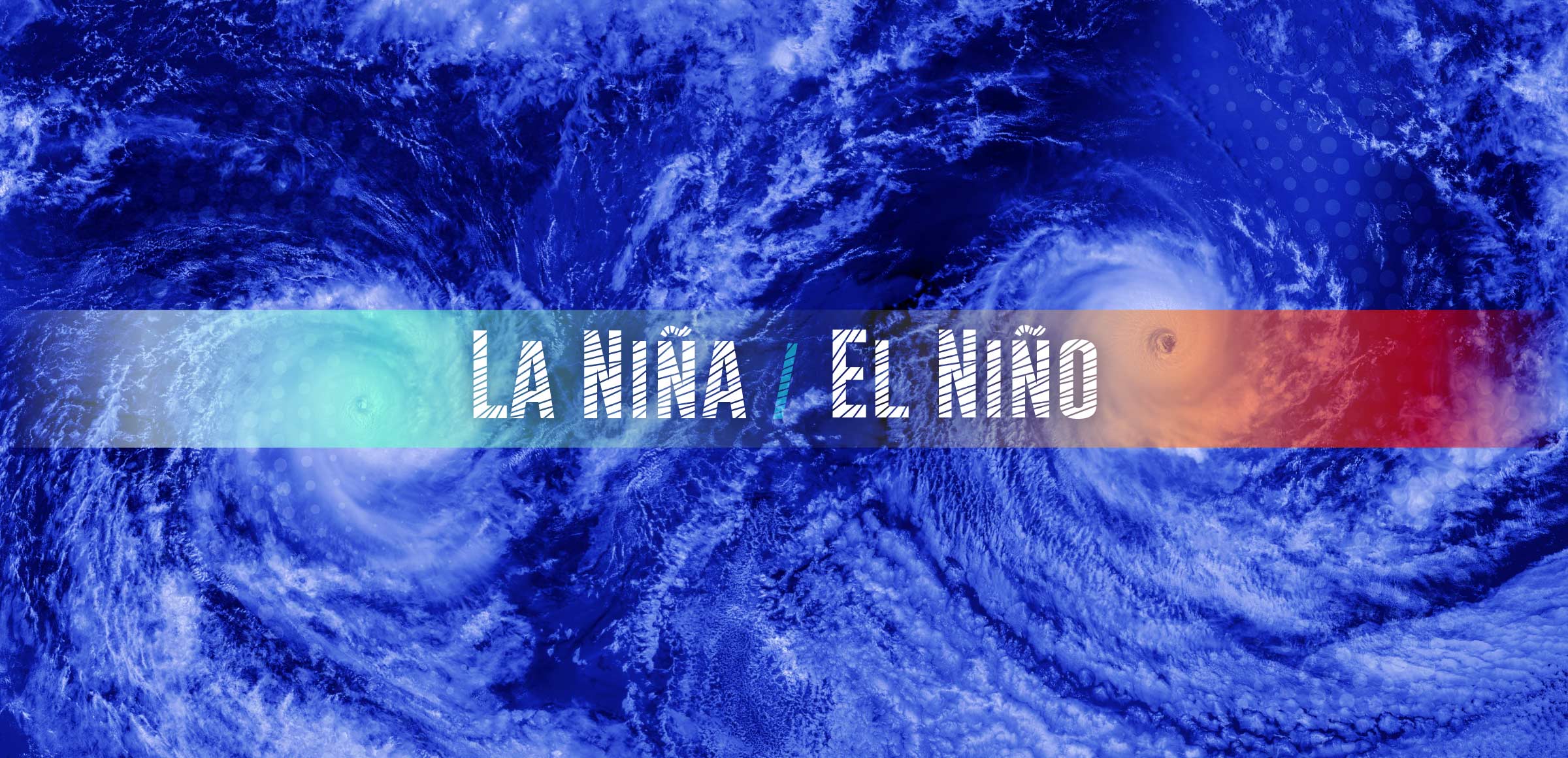29 May 2024
El Niño and La Niña (also known as ENSO, or El Niño-Southern Oscillation) are oceanic phenomena that cause climatic variations with effects across the Planet, and they can interact with global warming. Understanding these events is critical to developing adaptation strategies.
What Are El Niño and La Niña?
El Niño (The Little Boy, in Spanish) is a warming of Pacific surface waters near the coast of South America that usually occurs every two to seven years. It was given this name by South American fishermen, who have observed it since at least the seventeenth century. This is because it often peaks around Christmas time, which is when Christians celebrate the birth of the baby Jesus. This warming lasts for a few months (usually for about nine to 12 months, but sometimes for years) and alternates with La Niña (The Little Girl, in Spanish), a cooling phase. Together, these phenomena can also produce changes in atmospheric pressure. The last El Niño peaked in December 2023, according to the World Meteorological Organization (WMO).
The effects of ENSO on the Earth
Scientists at NASA (the National Aeronautics and Space Administration) in the United States found that between 1997 and 1998 El Niño slowed the Earth’s rotation, increasing the length of the day by nearly a millisecond. This phenomenon actually moves huge amounts of water into the ocean, thereby altering the Planet’s rotation. La Niña also affects the rotation, but by accelerating it. These changes, though small, show the power of such weather phenomena.
Causes and effects in terms of climate, population and energy
In the Pacific Ocean, turbulence or abnormal disturbances can alter winds and currents, thus heating surface water. When this warming is more pronounced it in turn affects atmospheric pressure and winds, and El Niño can arise from this self-feeding mechanism. Its consequences first affect marine life in the Pacific, with changes in food availability for certain species. But its effects also include droughts and intense rainfall in other parts of the world, with significant impacts on South and North America, East Asia, and, to a lesser extent, Europe and Africa.
La Niña, as previously stated, has the opposite effect of El Niño: trade winds are stronger than usual and push more warm water toward Asia, while driving cold water up the west coast of South and North America. This tends to cause droughts in the southern United States and heavy rains and flooding in the Pacific Northwest and Canada. During a Niña year, winter temperatures are warmer than usual in the south and colder than usual in the north, and a stronger hurricane season can occur.
The economic and social impacts are significant: alterations to marine habitats threaten fisheries, while agriculture suffers from drought and abnormal rainfall. Lack of rainfall and thus water also affects hydropower generation, which is critical in many Latin American countries. El Niño can also cause fires in tropical forests and the bleaching of coral reefs.
The effect on climate change
ENSO has natural causes, but global warming could amplify its effects. Although there is no firm evidence that global warming affects its frequency, the IPCC (the United Nations Intergovernmental Panel on Climate Change) indicates that ENSO-related extreme weather events could intensify. For this reason, countering the causes of climate change and adapting to new conditions is essential. Starting with energy generation and distribution.
Renewable Sources and Resilient Grids
Renewable sources are critical in reducing greenhouse gas emissions (starting with carbon dioxide, CO2). Hydropower is historically important, but the growth over the years of wind and solar has helped increase global renewable installed capacity from 25.69% of the total in 2010 to 30.84% in 2015, rising to 41.98% in 2022.
But in addition to increasing the use of renewable sources, as required by various international climate agreements, action must also be taken on Grids, which are essential for the energy transition: they need to be improved and modernized if they are to withstand extreme weather events. More resilient infrastructure and digitalized Grids also enable predictive maintenance, which improves the reliability of energy supplies.
El Niño, La Niña, and ENSO are powerful natural phenomena that influence the global climate, with significant impacts on the economy, communities, and ecosystems. Understanding these events and promoting renewable sources and resilient Grids are crucial to addressing the challenges of climate change.
Find original article here.
SOURCE: ![]()

